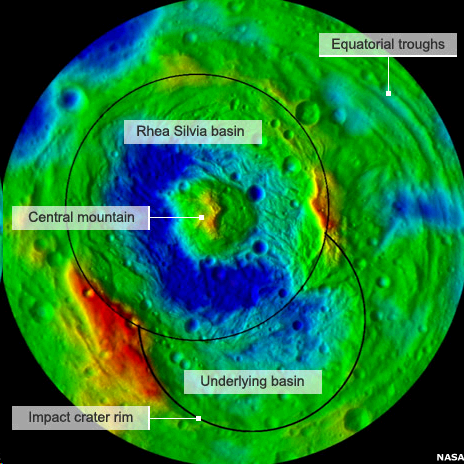The spacecraft orbited the second largest asteroid in the solar system for about 13 months and is now on its way to Ceres - the largest asteroid
 Signals transmitted by the Dawn spacecraft confirmed that it has left the gravitational field of asteroid Vesta, the second largest asteroid in the solar system with a diameter of 530 km
Signals transmitted by the Dawn spacecraft confirmed that it has left the gravitational field of asteroid Vesta, the second largest asteroid in the solar system with a diameter of 530 km
The spacecraft's ion engines are now pushing it toward a larger target in the asteroid belt between Mars and Jupiter, the dwarf planet Ceres, which is about 950 km in diameter.
Dawn is expected to arrive at Ceres in early 2015. Before setting off, the scientists pointed the spacecraft's cameras towards Vesta's north pole. The photograph reveals mountains and craters that have now been seen for the first time. Only now, as the spacecraft continues on its way, does the sun rise high enough in the sky to illuminate the high latitudes.
Vesta looks like a football with a hole in it as a result of two major impacts that removed huge volumes of rock at its south pole. The collisions sent shockwaves all over the asteroid and created a system of deep belts encircling the equator. The researchers will now check if the effect also reaches the landscape route in the North Pole area.
Before the spacecraft reached the asteroid in July 2011, the best view of Vesta was from a blurry image taken by the Hubble Space Telescope. Dawn studied in detail the mineral patterns exposed on Vesta's surface and mapped the diverse geological formations that shape the asteroid's ground.
On the same subject: the asteroid Vesta - a summary of findings

2 תגובות
To Daniel:
Good, it's a good thing that blocking comments doesn't cost money, otherwise your comment would be a real waste...
I'm not an astronomer, but from the little information I see here you can learn about the effects of collisions of asteroids with planets, including the one with Kaduha in the past and in the future.
In addition, you can learn what the asteroid is made of and what minerals it has. In the distant future we may be able to mine these resources, but in the near term, this information will help us understand how the asteroid belt was formed...
I'm sure professionals will find more use in this information…
So we wasted money on an unimportant planet and learned that it has craters………..